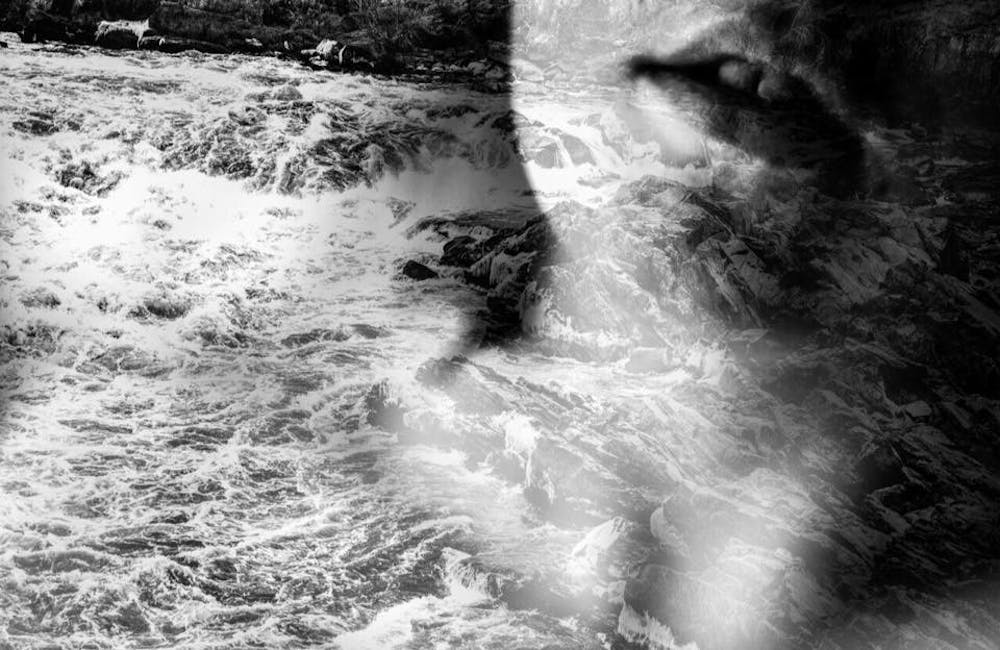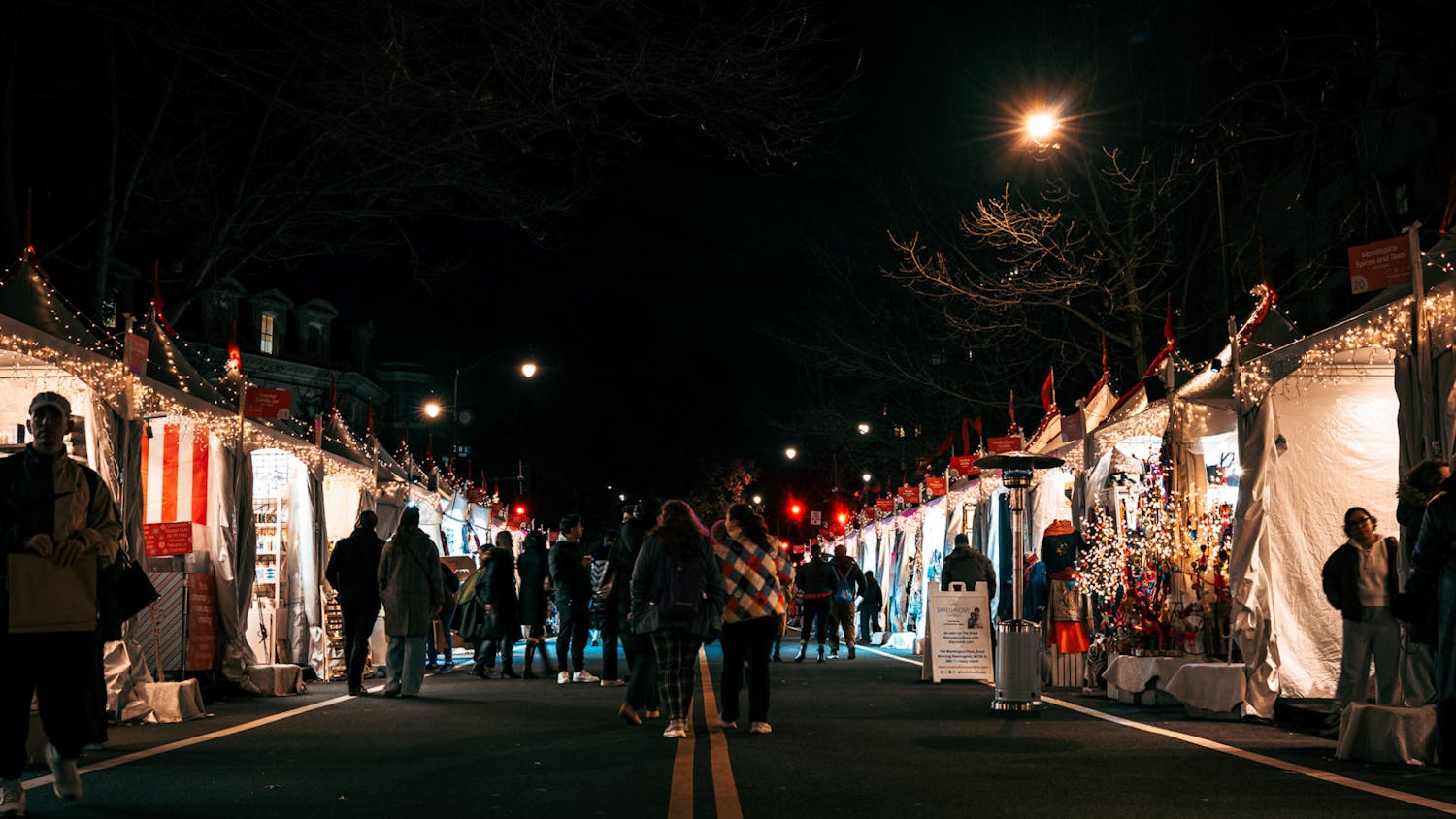For the month of February, students from AU and University of the District of Columbia collaborated on a Harlem Renaissance-themed photo show in honor of Black History Month. The exhibition, on display in Studio Gallery on R Street, was co-curated by School of Communication professors Bagus Himawan and Leena Jayaswal, who both teach film and media arts.
The exhibition featured 26 photographers, each of whom chose the work of a Harlem Renaissance writer to use as inspiration for their piece.
Steven Baboun’s “Lord, I Pray” was inspired by a James Weldon Johnson poem. Photo by Adena Maier.
Steven Baboun, a sophomore in the School of Communication, created a piece called “Lord, I Pray.” Baboun said the piece was inspired by James Weldon Johnson’s poem “Listen, Lord: A Prayer.” Much of the piece utilizes various shades of green and brown, and it shows a woman in a house with her hands up in prayer, a white sheet covering her face.
“The piece is about being consumed by sin and evil until you’re at the edge of insanity, confusion, and self-loss,” Baboun said. “The woman in the photograph is depicted as being on the edge of insanity, asking God for forgiveness as her life is shattered by said evil. The white veil covering her face symbolizes God’s redemption.”
Langston Hughes’ work seems to have lasted the test of time as many of the photographers chose his poetry as the inspiration for their work. One piece by Paige Salmon, a senior in SOC, “Temptations” was inspired by Langston Hughes’ poem “Suicide’s Note.” The print features a river with an overlay of a person’s lips.
“[It’s] a powerful piece that creates a strong imagery and emotion, and because of this I thought it would be an excellent verse to use as inspiration,” Salmon said. “I created a double exposure digitally using a landscape that I shot in Great Falls, Virginia and a self portrait.”
Another piece called “Blind Justice” was also inspired by the work of Langston Hughes. Kristie Chua, a sophomore in SOC, was inspired by Hughes’ poem “Justice” and used her friend Marissa Howell as her model.
“I wanted to convey the frustration and anger in the poem,” Chua said.
Chua’s second piece was also inspired by Hughes. She was inspired by the lines “Touching everybody with kind fingers / And touching each other as natural as Dew” in his poem “Daybreak in Alabama.”
“Since almost all of Langston Hughes’ work focuses on race and the injustices in America, I painted one hand black and one hand white,” said Chua.
She said that if viewers looked closely, they could see in the photo the edges where the paint ends. This was a deliberate choice because she wanted to convey how race shouldn’t be a dividing factor since we’re all human.
Pieces in the exhibition dealt with societal issues ranging from transgender acceptance, women’s rights, and colorism, which is discrimination within the black community based on the darkness of one’s skin.
Nicolette Fudge’s “Thinking of All Our Roses Lost” was inspired by Angelina Weld Grimke’s play “Rachel.” Photo by Adena Maier.
A piece by Samantha Storch, a senior in SOC, dealt with themes related to women’s rights and being oppressed by “women’s work.” Her piece is called “I Sit and Sew,” which shows the hands of a person working on embroidery. The piece was based on the poem of the same name by Alice Moore Dunbar-Nelson.
“I wanted to capture in my photo the frantic helplessness that is expressed in the poem,” Storch said. “In addition, the embroidery that is being done in the photo is actually a line from the poem - ‘my heart aches with desire.’”
Nicolette Fudge’s “Thinking of All Our Roses Lost” was inspired by Angelina Weld Grimke’s play “Rachel.” Photo by Adena Maier.
Helplessness was a common theme throughout pieces in the exhibition. Nicolette Fudge, a sophomore in SOC, created a piece called “Thinking of All Our Roses Lost” where she captured a woman sitting at a table looking off helplessly into the distance as red rose petals fall around her face. On the table is a glass of water, half empty. The piece was inspired by Angelina Weld Grimke’s play “Rachel.”
“I was inspired by a scene [in which] Rachel contemplates racism and what that means for her son and the younger generation of black youth,” Fudge said.
The exhibit took up the entire bottom floor of Studio Gallery and made a solemn and sincere tribute to the most influential writers of the Harlem Renaissance era. The show lasted from Feb. 4 until Feb. 28, and all of the pieces in the exhibition were available for purchase from prices ranging between $65 and $300.





